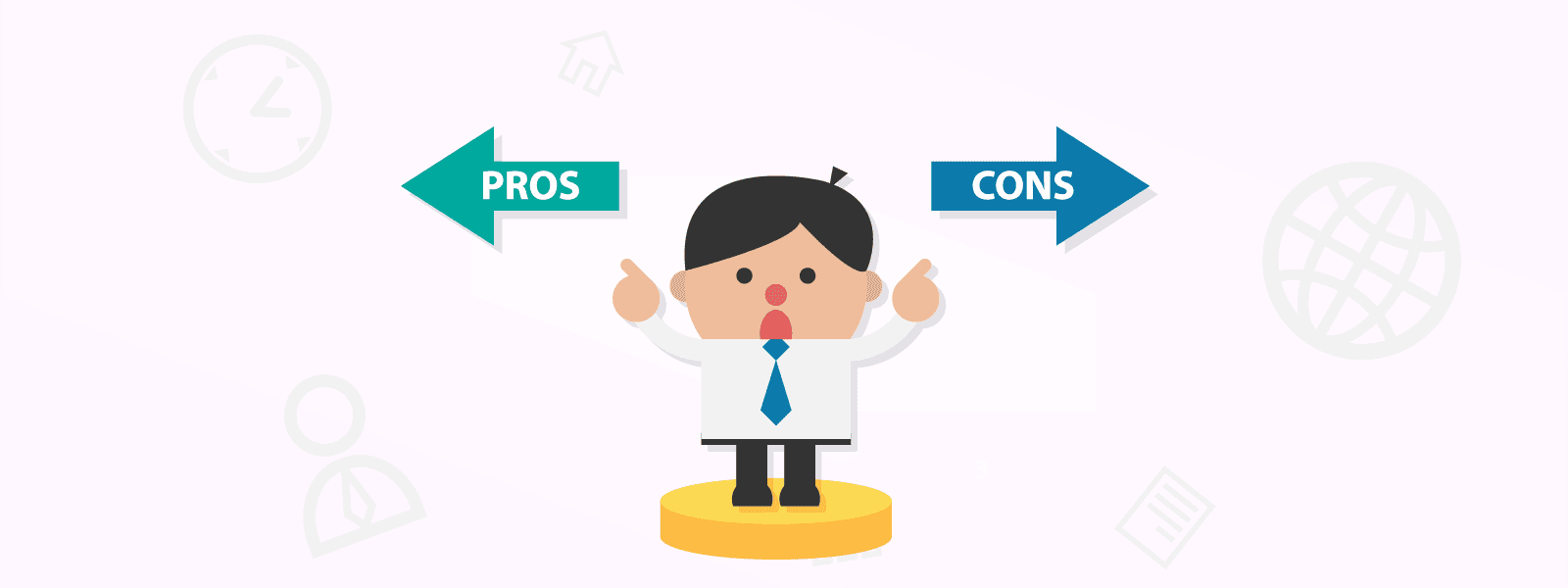The Age of Digital Abundance



What’s the first thing you do when you wake up?
If you’re anything like me, your morning goes something like this: you check your phone for messages, going through each app to see if anyone’s sent a message while you were asleep, and then you get out of bed. It can take anywhere from a minute to half an hour to get moving from the bed to anywhere else in the house, depending on how easily you get distracted by social media.
For most people, this is how their mornings go as well.
1. Digital abundance – what is it?

Let’s talk about “in-between” time.
It’s the equivalent of loose change in terms of how our day goes.
Say you have two big events in a day – your morning meeting with your supervisor or staff, and your lunch meeting with a big client. Each meeting takes up a huge chunk of your day. All of your focus, ideally, would be spent preparing for both meetings. You’ll have to check your emails, prepare your presentations, arrange your notes – there are about a hundred little things that you may feel you need to do just to get ready.
In-between time, in this case, is the time spent getting from one task to another – and in this day and age, these seemingly small amounts of time can accumulate very quickly.
Take, for example, your emails. How many minutes in a day do you spend checking through your emails? Most people will answer “oh, it takes only a few.” For some people, this is true enough.
However, according to research in 2018, adult Americans spent an average of three hours and thirty-five minutes per day on mobile devices, such as laptops and smartphones. That’s over three hours spent on the phone every day – that’s twenty-five hours a week. That’s more than a day’s worth of hours spent on mobile devices alone.
Suddenly, those few minutes a day don’t seem so insignificant.
Ideally, checking on apps should take only a minute or five at the most, especially with software applications that facilitate daily activities available for almost every device on the market. The truth, however, is that people can spend hours just trying to organize their software settings, or tabbing back and forth between any number of applications just to complete one task.
Honestly, it’s a hassle. It’s tedious, and most importantly, it can be a waste of time.
How do I know this? I run a photo editing business online as my side gig while working at Cazoomi. Our company encourages side hustles like Mailchimp does today. I always get inquiries and orders every day, ranging from minor photo touch-ups to batch orders for entire albums’ worth of pictures. Some clients contact me through email; some, through social media.
Now, I have at least three social media accounts. All of them get infrequent traffic, but that doesn’t stop me from checking all of them every day – in this day and age, slow responses can mean lost business, which leads to lost profit. So I check every single available channel of communications I have for messages and reply to all of them ASAP.
The entire process of checking my social media accounts and emails, and then responding to the messages I receive, takes me about an hour every day. That’s seven hours in a week.
That’s time I could’ve spent post-processing photos instead, or watching a movie with my family.
Software applications are intended to make life easier – but this isn’t always true all of the time. Because there are applications for almost everything these days, each of them utilizes a gimmick or special function to make them unique from each other. This means that while almost every need one can think of has a software app dedicated to addressing it, there are also a hundred other apps promising to do the same thing faster or better. In the world of software, IT asset management software stands out, helping organizations keep track of their tech resources and ensuring smooth operations.
2. What are the pros and cons?

Generally speaking, options are a good thing. Having options means that users like me can make informed choices and not settle for one thing when another thing has what I need. Settling for the only option available isn’t great for consumers like me.
That being said, though? It can be so frustrating to have so many choices available. There’s an app for this, another app for that, and all of these apps each don’t work with one another in their native setting for many valid reasons. It’s still a hassle and a half.
For casual users, it’s normal to have anywhere from five to twenty apps on phones and PCs. (I personally have about fifteen on my phone, and twice that on my laptop.) Now, imagine what the situation is like for someone with a business to run.
For people whose businesses utilize the internet for any reason, such as communicating with clients or marketing online, the half-hour a regular person spends checking their apps for inquiries becomes two hours to half a day. This is just to coordinate and sort through business-related communication, depending on the volume of traffic that a person has to sift through. There’s no two ways about it. It’s a huge time sink.
Now more than ever, time is a resource that we can’t waste – and switching back and forth between any number of apps is busywork that takes away from tasks that deserve more time and attention. Much more when migrating hundreds and thousands of data from one software to another manually.
3. What’s the alternative to all of this?

Hang on to your seats – we’re gonna get technical for a quick minute.
Imagine having an impressively large number of contacts, leads, or clients generated from your Software A. Since you will be using them for your other businesses processes, migrating them to your other application used daily, Software B, is necessary. However, doing this manually may take much of your time and resources. Traditional methods can help but will require additional manpower and an extended deadline to complete the transferring of data. These factors demand more expenses for the business to spend. All in all, it’s not a practical way to run a business.
What if there was an easier way to go through all of this digital information and migrate them from one software to another? What if you didn’t have to check all of your software apps all the time just to see which one was updated? What if you could free up your time spent staring at a screen so you can focus on the things that really matter?
The quickest and most efficient way to do this is to streamline your applications with an integration platform that is dedicated to this process.
4. Are these things even real?

For my part, I know the value of such helper apps – I run a website that’s both a portfolio and a shop. Doing everything manually would’ve been a nightmare without the help of programs and apps that remove the tedium of website maintenance.
Do I need to review my website’s traffic and see which content is getting the most hits? There’s software that pulls all of the available website information together so I can more easily read the stats. Do I need to update my shop with new content? There are programs that automate the upload process so I don’t have to code pages from scratch.
These conveniences are already greatly helpful for a small business.
Now, imagine the kind of work that a much bigger business has to handle. Payrolls need to be processed, HR services need to be managed on a daily basis, communications need to be coordinated so that the right content reaches the right people. Small mistakes with any of these tasks can spell financial loss in the thousands, if not millions. On the other hand, doing all of these tasks without any help is a quick way for a business’s workforce to lose productive hours.
In plain terms, a lot of the busywork involved in running a business can be completed in a lot of ways. Not a lot of these methods are time-efficient, though – a lot of the manual methods require a good deal of time to complete every day. That’s a great loss of resources right there.
A smart business owner would know what they need, in this case, and it’s a software that actively and seamlessly integrates various business programs to work with each other. Large corporate businesses are using them – why shouldn’t you?
5. Is there proof?

Take Zellis, for example. Zellis is the UK & Ireland’s leading payroll and HR software and service provider and operating across the UK and Ireland. The company provides its services to multiple corporations every day.
Now, the sheer volume of critical information traffic that Zellis handles is immense – and Zellis has trusted SyncApps to assist them in delivering their services daily to several multinational companies based in the UK and Ireland. They use programs like NetSuite and HubSpot for their daily processes, but these programs don’t work well with each other; without the help of an integration platform, Zellis staff will have had to input data from NetSuite into HubSpot daily – a process that can take days to complete.
So Zellis did the smart thing and utilized an integration platform.
The platform they use helps Zellis deliver their service to several international companies through its NetSuite to HubSpot filter automation. The tool they use integrates the data it receives from online forms into NetSuite and then filters the data so that only relevant information is received by HubSpot.
This whole is done practically hands-free – no manual input, no constant checking on the data flow to ensure it’s going smoothly. The tool pulls the website form data, plugs it through NetSuite, and then filters it through HubSpot, providing seamless data traffic that cuts through a lot of the tedium that Zellis would otherwise need to perform to get to the data they need.
With the help of tools like this, Zellis’ staff can focus on streamlining the data they receive to make payroll and other human resource services easier for their clients.
Enjoy your morning coffee without worry or interruption tomorrow by taking on the next integration project with a platform that scales with your team and industry. With integration platforms and tools like the one Zellis uses, digital commerce can be as easy as a few taps and a five-minute read – just enough time for your coffee to cool down.